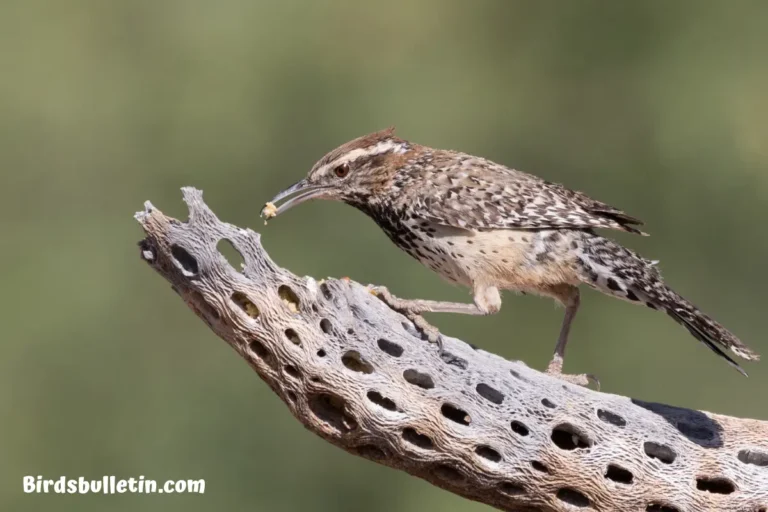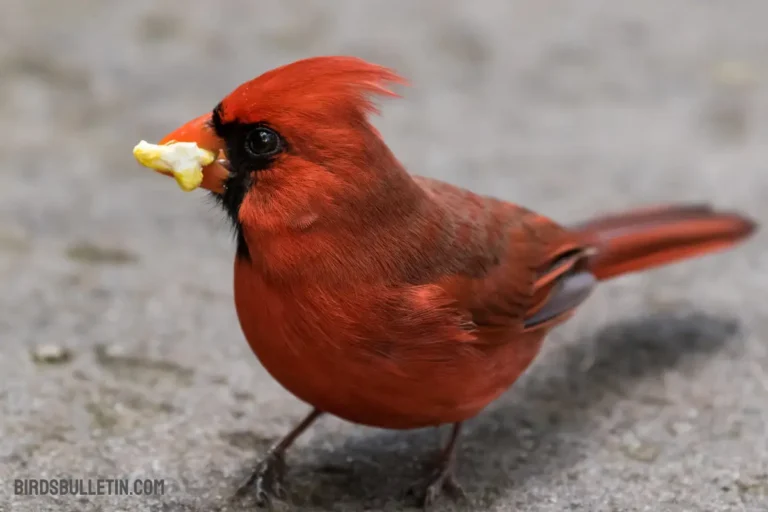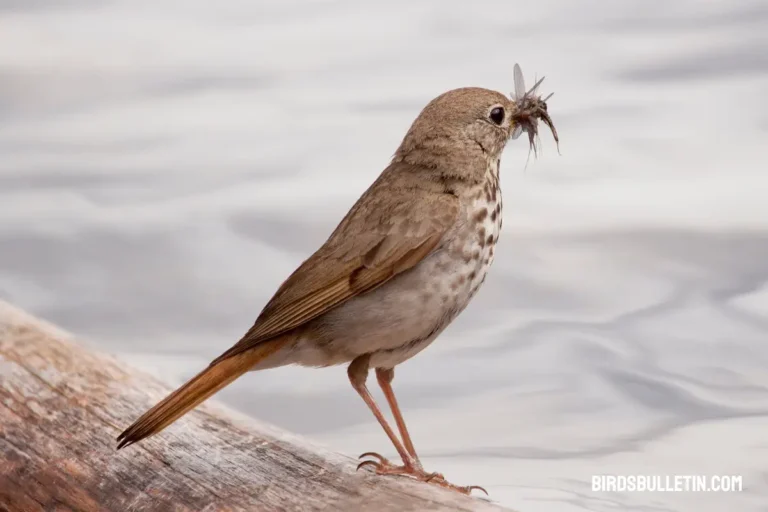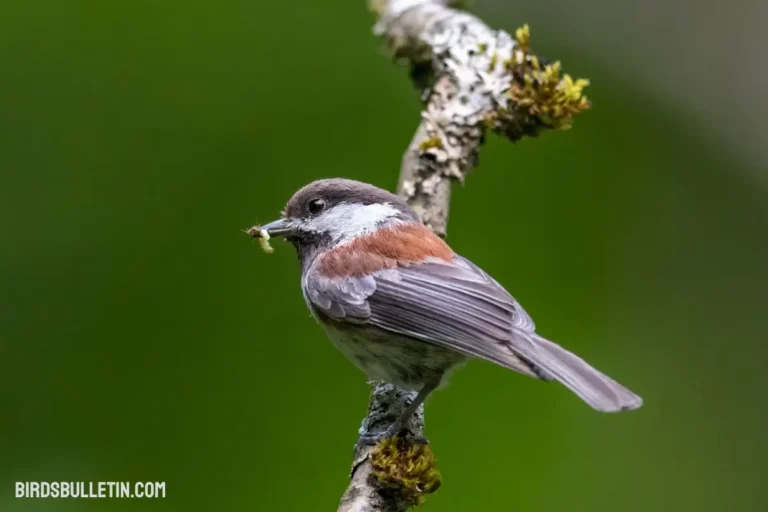What Do Mountain Bluebirds Eat?
The mountain bluebird is a stunning songbird that lives up to its name, sporting brilliant sky-blue plumage on the males. But there is more to this western bird than good looks. The mountain bluebird has adapted to thrive in its harsh, high-elevation environment thanks in part to its versatile diet.
Mountain bluebirds are opportunistic feeders, taking advantage of the seasonal abundance of different food sources. Their diet shifts throughout the year as food availability changes.
Although insects make up the majority of their food, they also consume other invertebrates, berries, and even occasional plant matter. Here are the list of what do Mountain Bluebird eat.
Looking for more articles about birds’ food and diet:
Favorite Mountain Bluebird Foods
Mountain bluebirds prey on a diverse assortment of insects and other invertebrates. Some of their favorite foods include:
| Food | Details |
|---|---|
| Beetles | Various species are eaten depending on habitat. Favorites include tiger beetles, ladybugs, and June bugs. |
| Grasshoppers | Readily caught during outbreak years when grasshopper populations boom. |
| Caterpillars | Hairy caterpillars and cutworms provide an excellent source of protein. |
| Ants | Smaller species are taken from the ground or vegetation. Army ants swarming on trees are a jackpot. |
| Bees | Mostly non-aggressive species are preyed upon, like mining bees. Avoid stinging species. |
| Crickets | Abundant prey in mountain meadows. |
| Spiders | Smaller orb weaver spiders and their egg sacks are readily eaten. |
| Snails | Land snails gleaned from vegetation add calcium to the diet. |
This diversity of prey provides the right mix of protein, fat, and other nutrients to raise mountain bluebird chicks and keep adults energized year-round.
How Do Mountain Bluebirds Catch Their Prey?
Mountain bluebirds have several hunting techniques to take advantage of different food sources:
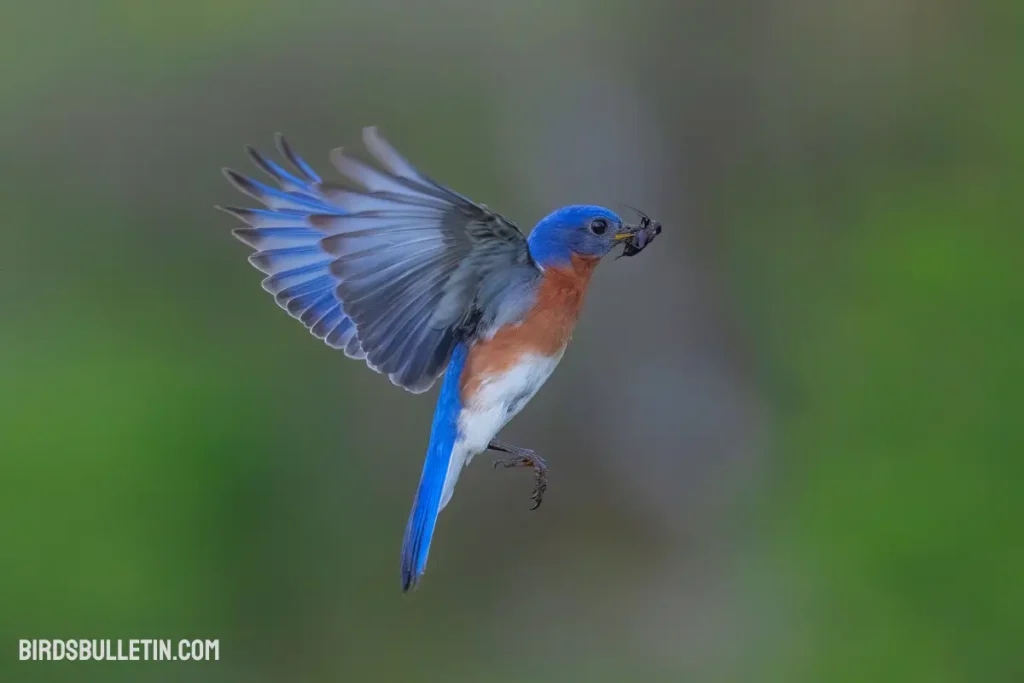
- Perch hunting – Perching on an elevated spot like a tree branch or powerline, they scan the terrain below for prey. Once detected, they swoop down quickly to snatch up the prey in flight or from the ground.
- Flycatching – Catching flying insects like bees and flies midair without landing first. They display amazing aerial agility catching insects on the wing.
- Gleaning – Plucking stationary prey like caterpillars and spiders directly from leaves, branches, and bark while perched or hovering.
- Ground foraging – Walking along the ground picking up prey like ants, beetles, and snails. Grasshoppers are flushed from vegetation and caught in flight.
- Berry eating – Starting in late summer, they supplement their diet with wild berries picked while perched or standing in bushes.
- Feeder use – Readily coming to backyard feeders stocked with mealworms or other meat-based bird foods.
What Do Mountain Bluebirds Eat in Winter?
Insects become scarce in winter, so mountain bluebirds switch to eating more berries and fruits. Favored winter foods include:
- Juniper berries
- Mistletoe berries
- Sumac berries
- Rose hips
- Crabapples
- Chokecherries
They also visit backyard bird feeders in winter for high-calorie offerings like suet, peanut hearts, and mealworms. These foods provide vital energy and keep their metabolism running.
On warmer winter days, mountain bluebirds still opportunistically grab any active insects and spiders they can find. But berries make up the bulk of winter nutrition.
What Do Baby Mountain Bluebirds Eat?
For the first few days after hatching, baby mountain bluebirds eat regurgitated insect prey from their parents. As they grow older and stronger, parents bring whole insects and spiders back to the nest for the fledglings to eat.
Caterpillars are fed extensively to chicks for their high protein and fat content. But parents bring a varied mix of prey. The diversity of insects in the chicks’ diet provides balanced nutrition for fast growth and healthy feather development.
Parent mountain bluebirds are kept exceptionally busy finding enough food to satisfy the perpetually hungry youngsters in the nest!
Frequently Asked Questions
01. Do mountain bluebirds drink water?
Yes, mountain bluebirds do drink water regularly when available. They are often seen perching on the edge of bird baths to drink and bathe.
02. Do mountain bluebirds eat at bird feeders?
Mountain bluebirds may visit backyard bird feeders, especially in winter for high-energy foods like suet, mealworms, and peanut hearts. They also eat fruit set out for birds.
03. How often do mountain bluebird parents feed their chicks?
The parents make frequent trips to the nest, delivering food to the begging chicks as often as every 2-5 minutes when the nestlings are very young. Feeding frequency tapers off as the chicks grow.
Conclusion
The varied diet of the mountain bluebird, shifting with seasonal food availability, allows this species to make the most of its montane habitat. Thanks to their adaptable feeding habits, these beautiful blue songbirds continue gracing the western mountains with their presence year-round.
Their dietary flexibility provides great insight into how birds creatively exploit different food sources to thrive.
References
- Cornell Lab of Ornithology. “Mountain Bluebird Life History.” All About Birds. https://www.allaboutbirds.org/guide/Mountain_Bluebird/lifehistory
- Ingold, D. and D. Galati. “Mountain Bluebird (Sialia currucoides), version 1.0.” In Birds of the World, edited by P. G. Rodewald. Cornell Lab of Ornithology, Ithaca, NY, USA, 1997.



